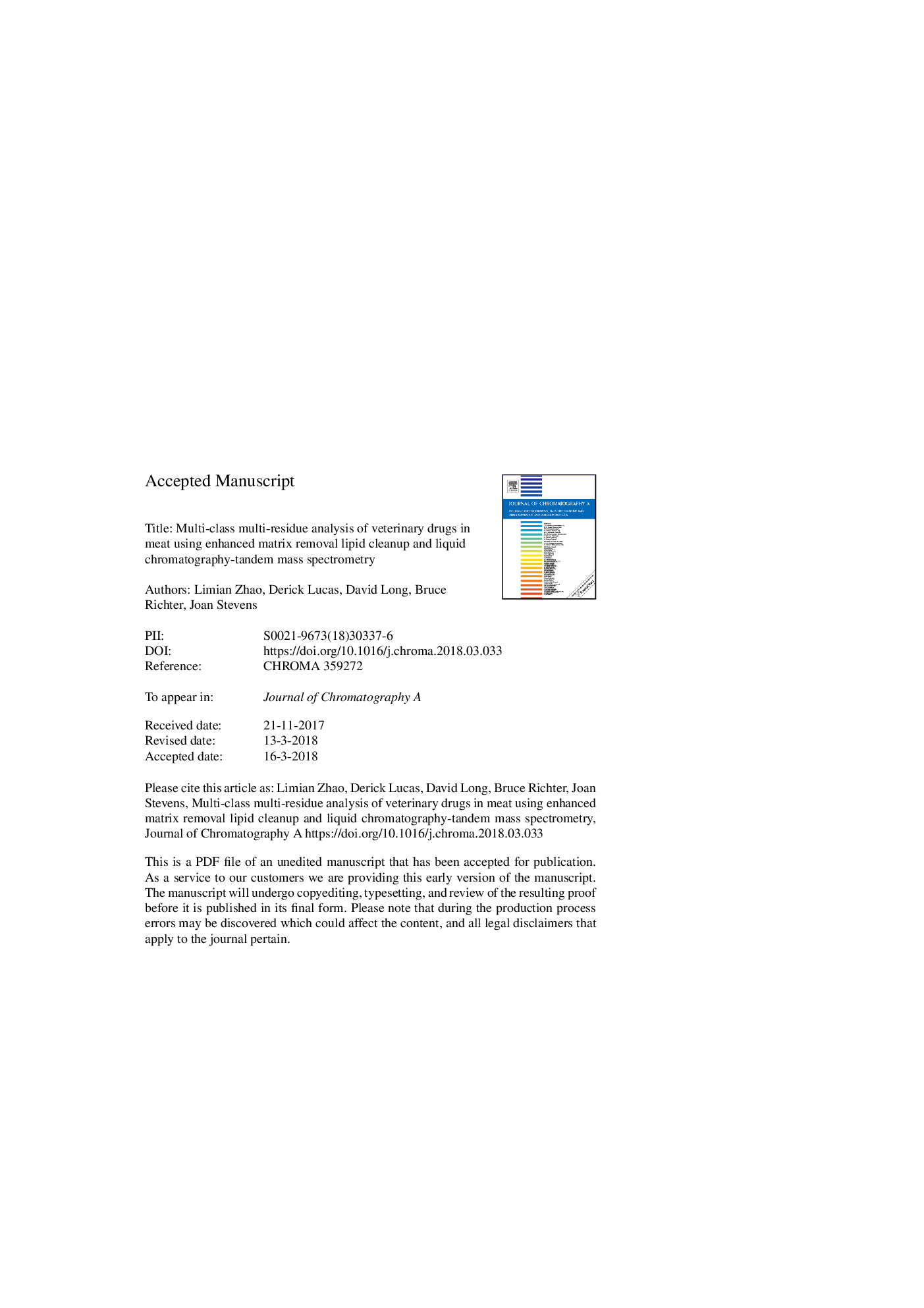| Article ID | Journal | Published Year | Pages | File Type |
|---|---|---|---|---|
| 7608289 | Journal of Chromatography A | 2018 | 26 Pages |
Abstract
This study presents the development and validation of a quantitation method for the analysis of multi-class, multi-residue veterinary drugs using lipid removal cleanup cartridges, enhanced matrix removal lipid (EMR-Lipid), for different meat matrices by liquid chromatography tandem mass spectrometry detection. Meat samples were extracted using a two-step solid-liquid extraction followed by pass-through sample cleanup. The method was optimized based on the buffer and solvent composition, solvent additive additions, and EMR-Lipid cartridge cleanup. The developed method was then validated in five meat matrices, porcine muscle, bovine muscle, bovine liver, bovine kidney and chicken liver to evaluate the method performance characteristics, such as absolute recoveries and precision at three spiking levels, calibration curve linearity, limit of quantitation (LOQ) and matrix effect. The results showed that >90% of veterinary drug analytes achieved satisfactory recovery results of 60-120%. Over 97% analytes achieved excellent reproducibility results (relative standard deviation (RSD)â¯<â¯20%), and the LOQs were 1-5â¯Î¼g/kg in the evaluated meat matrices. The matrix co-extractive removal efficiency by weight provided by EMR-lipid cartridge cleanup was 42-58% in samples. The post column infusion study showed that the matrix ion suppression was reduced for samples with the EMR-Lipid cartridge cleanup. The reduced matrix ion suppression effect was also confirmed with <15% frequency of compounds with significant quantitative ion suppression (>30%) for all tested veterinary drugs in all of meat matrices. The results showed that the two-step solid-liquid extraction provides efficient extraction for the entire spectrum of veterinary drugs, including the difficult classes such as tetracyclines, beta-lactams etc. EMR-Lipid cartridges after extraction provided efficient sample cleanup with easy streamlined protocol and minimal impacts on analytes recovery, improving method reliability and consistency.
Related Topics
Physical Sciences and Engineering
Chemistry
Analytical Chemistry
Authors
Limian Zhao, Derick Lucas, David Long, Bruce Richter, Joan Stevens,
